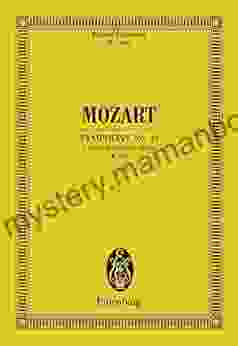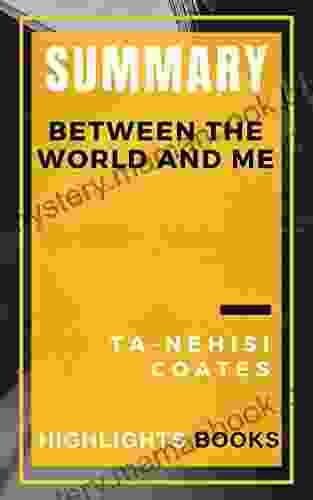Symphony No. 40 in G Minor, K. 550: An In-Depth Exploration of Mozart's Masterpiece


Wolfgang Amadeus Mozart's Symphony No. 40 in G Minor, K. 550, is a towering achievement in the classical repertoire. Composed in 1788, it is renowned for its emotional intensity, captivating melodies, and innovative orchestration. The symphony has been hailed as one of Mozart's finest works, and it continues to captivate audiences with its timeless beauty and musical genius.
Structure and Movements
Symphony No. 40 is composed of four movements, each of which displays Mozart's masterful handling of musical form and structure.
5 out of 5
| Language | : | English |
| File size | : | 13988 KB |
| Screen Reader | : | Supported |
| Print length | : | 80 pages |
| Paperback | : | 32 pages |
| Item Weight | : | 1.6 ounces |
| Dimensions | : | 8.4 x 0.6 x 10.7 inches |
- Allegro molto
- Andante
- Menuetto: Allegretto
- Allegro assai
The first movement, Allegro molto, opens with a dramatic and forceful theme that sets the tone for the entire symphony. The movement is characterized by its intense energy and rhythmic drive, with contrasting sections of lyrical beauty and sweeping melodies.
The second movement, Andante, provides a soothing and contrasting interlude to the first movement's intensity. This movement is a gentle and flowing aria, with a haunting melody that lingers in the listener's memory.
The third movement, Menuetto: Allegretto, is a lively and graceful minuet, with a contrasting trio section. The minuet's elegant rhythm and syncopated accents create a playful and charming atmosphere.
The final movement, Allegro assai, is a whirlwind of energy and excitement. This movement features a driving rhythm, soaring melodies, and complex counterpoint. The symphony concludes with a triumphant and emphatic coda, leaving the listener with a sense of exhilaration and awe.
Orchestration
Mozart's orchestration in Symphony No. 40 is both innovative and effective. He uses a variety of instruments to create a rich and vibrant sound, including:
- Two flutes
- Two oboes
- Two clarinets
- Two bassoons
- Two horns
- Two trumpets
- Timpani
- Strings
Mozart's use of contrasting timbres and dynamics creates a layered and expressive soundscape. For example, in the first movement, the contrasting sections of lyrical beauty feature soft, flowing strings, while the more intense sections utilize the full power of the orchestra, including the trumpets and timpani.
Historical Context
Symphony No. 40 was composed in 1788, a year of significant personal and professional turmoil for Mozart. The symphony was written shortly after the death of his father, Leopold. Mozart was also facing financial difficulties and struggling to establish himself as a successful composer in Vienna.
The symphony's emotional intensity and dramatic themes may reflect Mozart's own personal struggles during this time. The first movement, in particular, seems to express a sense of loss and despair, while the final movement offers a glimmer of hope and triumph.
Reception and Legacy
Symphony No. 40 was an immediate critical and popular success. It has been praised for its innovative orchestration, emotional depth, and melodic beauty. The symphony has been recorded numerous times and is regularly performed by orchestras around the world.
Symphony No. 40 is considered one of Mozart's masterpieces and a cornerstone of the classical repertoire. Its influence can be heard in the works of later composers, including Beethoven, Schubert, and Brahms.
Symphony No. 40 in G Minor, K. 550, is a testament to Wolfgang Amadeus Mozart's genius and his ability to express the full range of human emotions through music. The symphony's dramatic themes, innovative orchestration, and emotional depth have captivated audiences for centuries, and it continues to be a beloved and admired work today.
5 out of 5
| Language | : | English |
| File size | : | 13988 KB |
| Screen Reader | : | Supported |
| Print length | : | 80 pages |
| Paperback | : | 32 pages |
| Item Weight | : | 1.6 ounces |
| Dimensions | : | 8.4 x 0.6 x 10.7 inches |
Do you want to contribute by writing guest posts on this blog?
Please contact us and send us a resume of previous articles that you have written.
 Top Book
Top Book Novel
Novel Fiction
Fiction Nonfiction
Nonfiction Literature
Literature Paperback
Paperback Hardcover
Hardcover E-book
E-book Audiobook
Audiobook Bestseller
Bestseller Classic
Classic Mystery
Mystery Thriller
Thriller Romance
Romance Fantasy
Fantasy Science Fiction
Science Fiction Biography
Biography Memoir
Memoir Autobiography
Autobiography Poetry
Poetry Drama
Drama Historical Fiction
Historical Fiction Self-help
Self-help Young Adult
Young Adult Childrens Books
Childrens Books Graphic Novel
Graphic Novel Anthology
Anthology Series
Series Encyclopedia
Encyclopedia Reference
Reference Guidebook
Guidebook Textbook
Textbook Workbook
Workbook Journal
Journal Diary
Diary Manuscript
Manuscript Folio
Folio Pulp Fiction
Pulp Fiction Short Stories
Short Stories Fairy Tales
Fairy Tales Fables
Fables Mythology
Mythology Philosophy
Philosophy Religion
Religion Spirituality
Spirituality Essays
Essays Critique
Critique Commentary
Commentary Glossary
Glossary Bibliography
Bibliography Index
Index Table of Contents
Table of Contents Preface
Preface Introduction
Introduction Foreword
Foreword Afterword
Afterword Appendices
Appendices Annotations
Annotations Footnotes
Footnotes Epilogue
Epilogue Prologue
Prologue Yolanda Croes
Yolanda Croes Vera Brook
Vera Brook Travis Wayne Goodsell
Travis Wayne Goodsell Jim Kalbach
Jim Kalbach Jeffrey K Liker
Jeffrey K Liker Jessica Dupuy
Jessica Dupuy Michael Dobbs
Michael Dobbs James S A Corey
James S A Corey Muriel Harris Weinstein
Muriel Harris Weinstein Elani Gordon
Elani Gordon Robert Broomall
Robert Broomall Seth Seong
Seth Seong Tony Nester
Tony Nester Connie Evans
Connie Evans Sharon Ewell Foster
Sharon Ewell Foster Lee Gutkind
Lee Gutkind Wajdi Mouawad
Wajdi Mouawad Timothy Gene Sojka
Timothy Gene Sojka Sophie Kulinski
Sophie Kulinski Luke A Nichter
Luke A Nichter
Light bulbAdvertise smarter! Our strategic ad space ensures maximum exposure. Reserve your spot today!

 Derrick HughesInvisible Cities: A Journey Through the Imaginary, the Symbolic, and the Real
Derrick HughesInvisible Cities: A Journey Through the Imaginary, the Symbolic, and the Real
 Dwayne MitchellInari Konkon Koi Iroha Vol 23: A Journey of Love, Redemption, and Profound...
Dwayne MitchellInari Konkon Koi Iroha Vol 23: A Journey of Love, Redemption, and Profound... Bret MitchellFollow ·19.1k
Bret MitchellFollow ·19.1k Walter SimmonsFollow ·6k
Walter SimmonsFollow ·6k Alvin BellFollow ·2.4k
Alvin BellFollow ·2.4k Virginia WoolfFollow ·2.5k
Virginia WoolfFollow ·2.5k Richard AdamsFollow ·19.7k
Richard AdamsFollow ·19.7k Todd TurnerFollow ·7k
Todd TurnerFollow ·7k Rick NelsonFollow ·10k
Rick NelsonFollow ·10k Jamie BlairFollow ·3.7k
Jamie BlairFollow ·3.7k

 Luke Blair
Luke BlairWhen the Grid Goes Down: Disaster Preparations and...
In today's modern...

 Diego Blair
Diego BlairComputer Virus Guide: Everything You Need to Know to Stay...
Computer viruses...

 Dale Mitchell
Dale MitchellThe Whiskey of Our Discontent: A Literary Exploration of...
John Steinbeck's The...

 Mark Mitchell
Mark MitchellA Culinary Odyssey: Exploring the Delectable World of...
An to Southern...
5 out of 5
| Language | : | English |
| File size | : | 13988 KB |
| Screen Reader | : | Supported |
| Print length | : | 80 pages |
| Paperback | : | 32 pages |
| Item Weight | : | 1.6 ounces |
| Dimensions | : | 8.4 x 0.6 x 10.7 inches |











